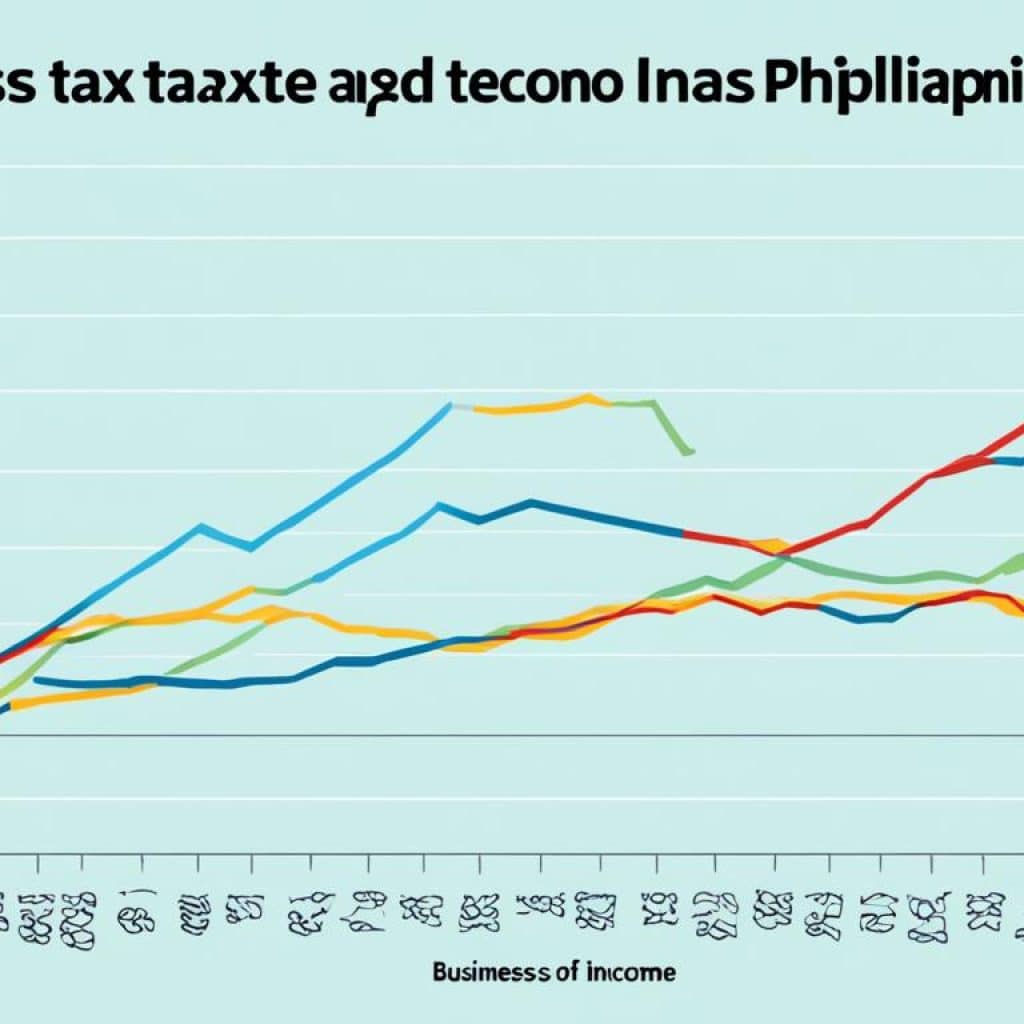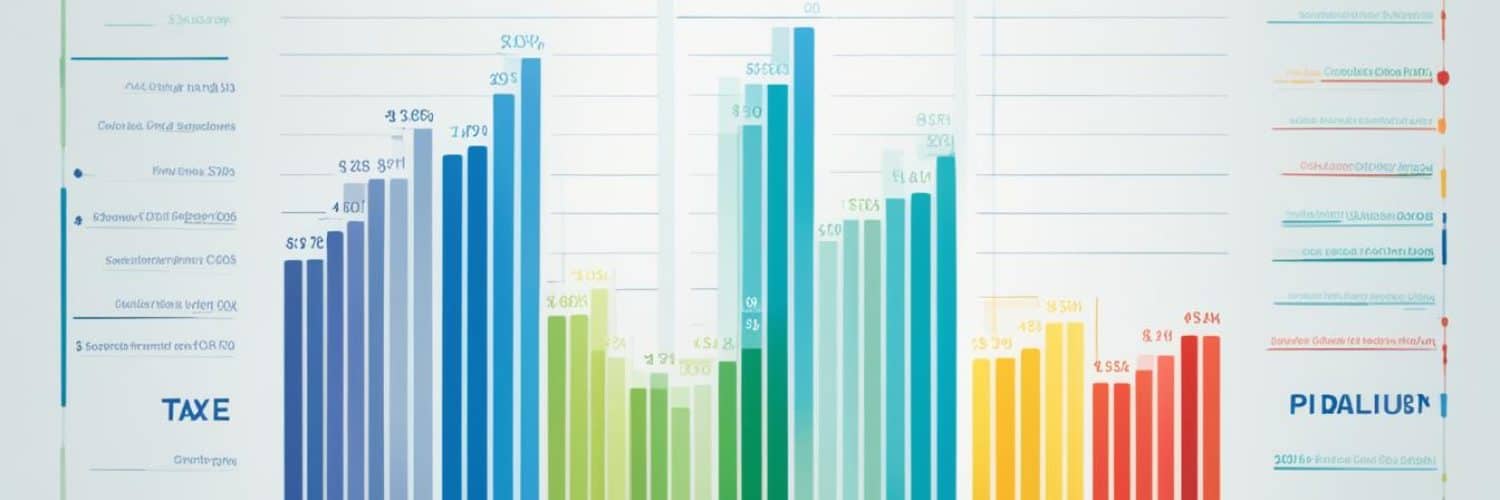Are you aware of the tax rates in the Philippines and how they impact individuals and businesses? Whether you’re a resident citizen, non-resident citizen, or a foreign company operating in the country, understanding the tax system is crucial for financial planning and compliance. But do you really know how the tax rates work? Are there any hidden nuances that can lead to unexpected tax liabilities or savings?
In this article, we will dive into the intricacies of tax rates in the Philippines. From income taxes to fringe benefits tax, corporate income tax rates to value-added tax, we’ll unravel the complexities and provide you with a comprehensive understanding of how taxes are calculated and applied. You’ll discover the different tax rates for compensation income, the impact of fringe benefits tax on employees, and the rates for income subject to final tax. We’ll also explore business income tax rates, minimum corporate income tax, withholding tax rates, and much more.
By the end of this article, you’ll have a solid grasp of the tax landscape in the Philippines, empowering you to make informed decisions, optimize your tax obligations, and ensure compliance.
Key Takeaways:
- Understanding the tax rates in the Philippines is crucial for individuals and businesses to navigate the tax landscape effectively.
- The Philippines taxes its resident citizens on their worldwide income, while non-resident citizens and aliens are taxed only on income from sources within the Philippines.
- Tax rates for compensation income vary based on income brackets, ranging from 0% to 35%, and fringe benefits furnished to managerial and supervisory-level employees are subject to a final Fringe Benefits Tax (FBT) of 35%.
- Business income is subject to graduated tax rates, but individuals with gross sales below the VAT threshold can opt for an 8% tax on gross sales instead.
- Value-added tax (VAT) is imposed at a rate of 12% on most goods and services with actual gross sales over PHP 3 million.
Tax Rates for Compensation Income
When it comes to compensation income, different tax rates apply to resident aliens and non-resident aliens doing business in the Philippines. It’s important to understand these rates to ensure accurate tax reporting and compliance.
Tax Rates for Resident Aliens
For resident aliens receiving compensation income, the tax rates are as follows:
| Taxable Income Range (Philippine Peso) | Tax Rate |
|---|---|
| Up to 250,000 | 0% |
| 250,001 – 400,000 | 20% |
| 400,001 – 800,000 | 25% |
| Above 800,000 | 35% |
These rates are progressive, meaning that higher income levels are subject to higher tax rates.
Tax Rates for Non-Resident Aliens Doing Business
For non-resident aliens engaged in business and receiving compensation income, the tax rates are as follows:
| Taxable Income Range (Philippine Peso) | Tax Rate |
|---|---|
| All Income | 25% |
Non-resident aliens are subject to a flat tax rate of 25% on their compensation income, regardless of the income level.
It’s important to note that these tax rates are subject to change, and it’s advisable to consult with a tax professional or refer to official government sources for the most up-to-date information.
Fringe Benefits Tax (FBT)
Fringe benefits furnished to managerial and supervisory-level employees by the employer are subject to a final Fringe Benefits Tax (FBT) of 35%. The FBT is calculated based on the grossed-up monetary value of the benefits. Managerial employees are those who may mandate and execute management policies, while supervisory employees effectively recommend such actions.
The FBT is payable quarterly by the employer and is deductible as part of fringe benefit expenses. Benefits subjected to FBT are no longer included in the employees’ taxable income.

Tax Rates for Income Subject to Final Tax
When it comes to income subject to final tax in the Philippines, the tax rates vary based on residency and business engagement. For resident and non-resident aliens engaged in trade or business, the maximum tax rate on income subject to final tax is 20%. This rate typically applies to passive investment income, such as dividends, interest, and rental income.
On the other hand, for non-resident aliens not engaged in trade or business, the tax rate on income subject to final tax is a flat 25%. It’s important to note that capital gains and investment income may have different tax rates, depending on the specific provisions.
Understanding the tax rates for income subject to final tax is crucial for individuals and businesses to accurately calculate their tax liabilities. By staying informed about these rates, taxpayers can ensure compliance with the Philippine tax laws and optimize their tax planning strategies.
Key Takeaways:
- Resident and non-resident aliens engaged in trade or business are subject to a maximum tax rate of 20% on income subject to final tax.
- Non-resident aliens not engaged in trade or business face a flat tax rate of 25% on income subject to final tax.
- Capital gains and investment income may have different tax rates, so it’s important to review the specific provisions for these types of income.
By understanding the tax rates for income subject to final tax, individuals and businesses can effectively manage their tax liabilities and make informed financial decisions.
| Taxpayer | Tax Rate |
|---|---|
| Resident and non-resident aliens engaged in trade or business | 20% |
| Non-resident aliens not engaged in trade or business | 25% |
Tax Rates for Business Income
As an individual who is self-employed or practicing a profession, understanding the tax rates for business income is essential. While the graduated income tax rates mentioned earlier for compensation income generally apply, there is an alternative tax option for those with gross sales/receipts and other non-operating income that do not exceed the VAT threshold (currently PHP 3 million).
Instead of the graduated tax rates, individuals in this category can choose to be taxed at an 8% rate on gross sales/receipts exceeding PHP 250,000. This alternative tax rate provides a simplified approach for individuals operating smaller businesses, ensuring a fair and manageable tax burden.
Did You Know? Opting for the 8% tax rate on gross sales/receipts is a practical choice for small business owners with income levels that fall within the specified range. This streamlined tax option simplifies the tax computation process, allowing for more time and energy to focus on growing and managing the business.
It’s important to note that business income subjected to graduated tax rates is also subject to other business-related taxes, such as VAT or percentage tax. These additional taxes are calculated based on specific regulations and rates set by the Philippine government.
Comparison of Tax Options for Business Income
| Tax Rates | Gross Sales/Receipts | Tax Option |
|---|---|---|
| Graduated Tax Rates | Any amount | Default option for business income |
| 8% | Exceeding PHP 250,000 | Alternative tax option for gross sales/receipts not exceeding PHP 3 million |
Choosing the appropriate tax option for business income requires understanding the specific circumstances and income levels of your business. Consultation with a tax professional can provide valuable insights and ensure compliance with the regulations set by the Bureau of Internal Revenue (BIR), allowing you to optimize your tax strategy while adhering to legal requirements.

Corporate Income Tax Rates
The Philippines operates under a territorial tax system, meaning that only income sourced within the country is subject to taxation. Understanding the corporate income tax rates is crucial for both foreign and domestic companies.
Foreign companies have been given a favorable rate as an incentive to invest in the Philippines. Since July 2020, these companies are eligible for a reduced corporate income tax (CIT) rate of 25%, down from the regular rate of 30%. This reduction provides significant cost savings for foreign companies and encourages them to establish a presence in the country.
On the other hand, domestic micro, small, and medium-sized companies enjoy an even more favorable rate. For taxable income up to PHP 5 million, these companies benefit from a preferential corporate income tax rate of 20%. This lower rate helps support and promote the growth of local businesses, acting as an incentive for entrepreneurship and economic development.
Looking ahead, there are further developments in corporate income tax rates. By 2027, the corporate income tax rate for foreign companies will be further reduced to 20%. This long-term plan aims to attract more foreign investments, boost economic activity, and enhance the competitiveness of the Philippines as a business destination.
Tax Rates Comparison
| Company Type | Effective Date | Tax Rate |
|---|---|---|
| Foreign Companies | July 2020 to 2022 | 25% |
| Domestic Micro, Small, and Medium-Sized Companies | All the Time | 20% |
| Foreign Companies | From 2023 to 2026 | 25% |
| Foreign Companies | From 2027 Onwards | 20% |
This table provides a clear overview of the different tax rates for foreign and domestic companies. It highlights the preferential rates available for businesses in the Philippines, encouraging both local and foreign investments.
Minimum Corporate Income Tax (MCIT)
One crucial aspect of corporate taxation in the Philippines is the Minimum Corporate Income Tax (MCIT). The MCIT is a fixed tax rate of 2% imposed on the gross income of both domestic and resident foreign corporations annually. It serves as a safeguard to ensure that companies contribute a minimum level of tax regardless of their profitability.
The MCIT is applicable when the standard Corporate Income Tax (CIT) rate of 20% is lower than the 2% MCIT. In this scenario, the MCIT becomes the minimum tax liability for the company. However, if the normal tax liability exceeds the MCIT, the excess can be carried forward and credited against the normal tax for the succeeding taxable years.
The purpose of the MCIT is to prevent companies from avoiding taxation altogether in case they have low or negative net income during a particular year. The MCIT helps maintain a fair and consistent contribution from businesses, even during periods of financial downturn or minimal profitability.
MCIT Calculation Example:
Let’s consider a domestic corporation that had a gross income of PHP 10 million for the year, but due to various deductions and expenses, the net income is PHP 2 million. The standard CIT rate of 20% would amount to PHP 400,000. However, the MCIT of 2% would be PHP 200,000, which is lower than the computed CIT. In this case, the company would have to pay the MCIT of PHP 200,000 as the minimum tax liability.
| Scenario | Gross Income | Net Income | Standard CIT (20%) | MCIT (2%) | Tax Liability |
|---|---|---|---|---|---|
| Example | PHP 10,000,000 | PHP 2,000,000 | PHP 400,000 | PHP 200,000 | PHP 200,000 |
The MCIT ensures that companies maintain a minimum tax liability and contribute to the national revenue even in situations where they may have lower profits or losses. It acts as a mechanism to balance the tax burden for corporations, promoting fairness and sustainability in the corporate tax system.
Withholding Tax Rates
In the Philippines, various types of income are subject to withholding tax rates. Understanding these rates is crucial for individuals and businesses to ensure compliance with tax regulations. Here are the withholding tax rates for specific income types:
Dividends
Dividends distributed by a resident company are subject to a 25% withholding tax. However, when dividends are distributed to non-residents, the withholding tax rate is 15%. In some cases, non-residents may be eligible for tax credits if allowed by their country of residence.
Interest
Interest paid to non-residents is subject to a 20% withholding tax. This tax is applied to the interest earned or paid to non-resident individuals or entities.
Royalty Payments
When it comes to royalty payments, the withholding tax rates differ based on the nature of the recipient. Domestic or resident companies are subject to a 20% withholding tax, while non-residents face a slightly higher rate of 25% on royalty payments.
These withholding tax rates are designed to ensure that the appropriate amount of tax is deducted at the source before the income is disbursed to the recipient. It is important to consult with tax professionals to accurately apply these rates and fulfill the tax obligations.
| Income Type | Withholding Tax Rate |
|---|---|
| Dividends (Resident company) | 25% |
| Dividends (Non-resident) | 15% |
| Interest (Non-resident) | 20% |
| Royalty Payments (Domestic or resident companies) | 20% |
| Royalty Payments (Non-resident) | 25% |
Fringe Benefits Tax (FBT)
Fringe benefits can be a valuable addition to an employee’s compensation package, providing perks beyond the basic salary. However, it’s important to understand that fringe benefits may be subject to taxes, including the Fringe Benefits Tax (FBT).
Under the Philippine tax system, fringe benefits granted to supervisory and managerial-level employees are subject to a 35% tax on the grossed-up monetary value of the benefit. This means that the value of the benefit is increased by the tax rate before calculating the FBT.
Fringe benefits tax is not imposed when the benefits are deemed necessary for the nature of the business.
It’s important for employers to accurately assess and report the value of the fringe benefits provided to employees to ensure compliance with tax regulations. Failure to do so may result in penalties and additional taxes.

Understanding and properly managing fringe benefits can help businesses attract and retain top talent while ensuring compliance with tax laws. Consult with a tax professional to navigate the complexities of the Fringe Benefits Tax and make informed decisions that benefit both employees and employers.
Branch Profit Remittance Tax
Foreign companies that operate branches in the Philippines, excluding those registered with the Philippine Economic Zone Authority (PEZA), are subject to income tax at a rate of 30% on the income generated within the country.
Additionally, a 15% branch profit remittance tax (BPRT) is imposed on after-tax profits remitted by the branch to its head office. It’s important to note that only income items effectively connected with the conduct of trade or business in the Philippines are included in the calculation of after-tax profits subject to BPRT.
| Foreign Company Branch | Income Tax Rate | Branch Profit Remittance Tax (BPRT) |
|---|---|---|
| Registered with PEZA | 30% | No BPRT |
| Not registered with PEZA | 30% | 15% on after-tax profits remitted to head office |
The branch profit remittance tax ensures that a portion of the profits generated by foreign companies’ branches is retained within the Philippines. This helps to support the country’s economic development and ensures fair taxation of profits repatriated out of the country.
Improperly Accumulated Earnings Tax
Corporations that accumulate income with the purpose of avoiding tax may be subject to an improperly accumulated earnings tax (IAET) of 10%. This tax aims to discourage businesses from hoarding excessive profits to manipulate their tax liability.
The IAET primarily targets closely held corporations with at least 50% ownership by not more than 20 individuals. These corporations often have greater flexibility in managing their earnings and distributions.
It is important to note that the IAET is not imposed when the accumulated earnings or profits are reasonable and necessary for the business’s operational needs and future expansion plans. This provision acknowledges that businesses may need to retain earnings for legitimate purposes to sustain and grow their operations.
However, businesses should exercise caution to ensure that their earnings retention aligns with genuine business requirements, as excessively accumulated earnings could attract IAET scrutiny from tax authorities.
| IAET Overview | Description |
|---|---|
| Tax Type | Improperly Accumulated Earnings Tax (IAET) |
| Tax Rate | 10% |
| Applicable to | Closely held corporations with at least 50% ownership by not more than 20 individuals |
| Exemptions | No IAET if accumulated earnings are reasonable and necessary for the business |
Personal Income Tax Rates
In the Philippines, personal income tax rates follow a progressive system, meaning that the tax rate increases as the income bracket increases. The maximum personal income tax rate is 35%. However, under the Tax Reform for Acceleration and Inclusion (TRAIN) Act, personal income tax rates were reduced for all taxpayers, excluding those in the highest income bracket.
Starting from January 1, 2023, taxpayers with an income below PHP 8 million will experience a reduction of 2-5% in their tax rate. This change aims to provide relief to individuals and families by lowering their tax burden, allowing them to retain more of their hard-earned income.
Understanding the personal income tax rates is essential for individuals to plan their finances effectively. By taking advantage of the revised tax rates, taxpayers can optimize their tax strategies and make informed decisions regarding savings, investments, and other financial matters.
| Income Range | Tax Rate |
|---|---|
| PHP 0 – PHP 250,000 | 0% |
| PHP 250,001 – PHP 400,000 | 20% |
| PHP 400,001 – PHP 800,000 | 25% |
| PHP 800,001 – PHP 2,000,000 | 30% |
| PHP 2,000,001 – PHP 8,000,000 | 32% |
| PHP 8,000,001 and above | 35% |
By taking advantage of the revised personal income tax rates, individuals can enhance their financial position and contribute to overall economic growth. It is advisable to consult with a tax professional to ensure accurate tax planning and compliance with applicable laws and regulations.
Value-Added Tax (VAT)
The Philippines imposes a 12% value-added tax (VAT) on most goods and services that achieve actual gross sales over PHP 3 million. This tax is an important source of revenue for the government, contributing to public services and infrastructure development. The VAT system follows a consumption-based approach, wherein the burden of tax falls on the end consumer.
The VAT privilege is also granted to registered exporters on their local purchases of goods and services. This helps promote the competitiveness of Philippine exporters by reducing their production costs. Registered exporters can claim VAT refunds, allowing them to reinvest their savings and expand their businesses.
However, it is important to note that certain goods and services are exempted from VAT or subject to special provisions. These exemptions aim to alleviate the burden on essential goods and services, such as basic food items, medicines, education, and socialized housing.
The Benefits of VAT
The Value-Added Tax system offers several advantages for the Philippines:
- Stable revenue source: VAT provides a stable and predictable source of revenue for the government, which can be allocated towards public welfare programs, education, healthcare, and infrastructure development.
- Reduced tax evasion: VAT helps combat tax evasion by establishing a comprehensive and transparent tax framework, ensuring that businesses remit taxes based on their sales and purchases.
- Progressive taxation: The VAT system promotes progressive taxation, as the tax burden is proportionate to the consumption level of individuals and businesses. This helps redistribute wealth and reduce income inequality.
- Better fiscal responsibility: VAT encourages fiscal responsibility among businesses by ensuring that they maintain proper records and comply with tax regulations. This fosters a culture of transparency and accountability.
Overall, the Value-Added Tax system plays a vital role in the Philippine economy, generating revenue, promoting fairness, and enabling sustainable development. It is important for businesses and individuals to understand the VAT provisions and comply with their tax obligations to contribute to the country’s progress.
| Advantages of Value-Added Tax (VAT) | Disadvantages of Value-Added Tax (VAT) |
|---|---|
| Stable revenue source for the government | Potential burden on low-income individuals |
| Reduced tax evasion | Possible impact on inflation |
| Progressive taxation | Complexity of VAT compliance for businesses |
| Better fiscal responsibility | Potential administrative challenges |
Taxation for Resident and Non-Resident Citizens
Resident citizens and non-resident citizens in the Philippines are subject to different tax regulations based on their residency status. Let’s explore the taxation rules for each group:
Resident Citizens
Resident citizens are individuals who have established the Philippines as their permanent home. They are required to pay taxes on their worldwide income, including income earned both within and outside the country. As a resident citizen, it is essential to report all sources of income and comply with the tax laws and regulations.
Non-Resident Citizens
Non-resident citizens, on the other hand, are individuals who are citizens of the Philippines but reside outside the country. These individuals are only taxed on the income they earn from Philippine sources. Income from outside the Philippines is not subject to taxation for non-resident citizens.
The determination of an individual’s residency status is based on various factors, such as their physical presence abroad, intent to reside, and the nature of their stay in the Philippines. It is crucial to understand these rules and consult with tax professionals to ensure compliance with the taxation requirements based on residency status.
Understanding the taxation rules for resident and non-resident citizens is essential to navigate the Philippine tax system effectively and fulfill tax obligations accordingly.
Conclusion
When it comes to tax rates in the Philippines, understanding the intricacies is key to successfully navigating the tax landscape. Whether you’re an individual or a business, knowing the various tax rates is essential for effective financial planning and compliance. From compensation tax rates to corporate income tax rates, value-added tax, and personal income tax rates, being well-informed can simplify your tax journey.
It’s highly recommended to seek personalized advice from tax professionals who can provide expert guidance based on your specific circumstances. They can help you optimize your tax strategy, make informed decisions, and ensure compliance with the existing regulations. By staying up-to-date with the latest tax rates and regulations, you can simplify your tax obligations in the Philippines.
Stay informed, consult professionals, and take advantage of available resources to navigate the tax landscape confidently. Understanding the tax rates will not only help you meet your obligations but also maximize your financial opportunities. Simplify your tax journey in the Philippines by staying informed about tax rates and regulations.


















Add comment